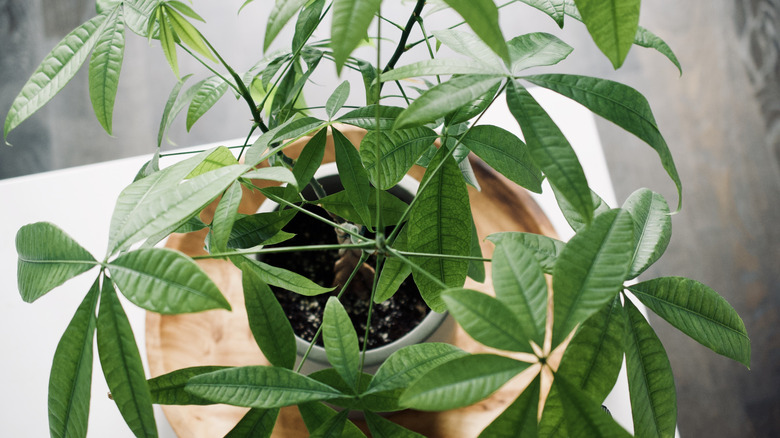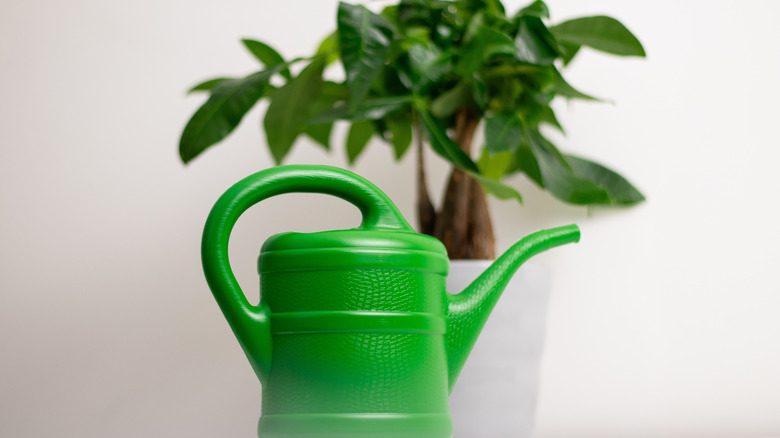The Best Method For Watering Money Trees (And How Often To Do It)
The money tree (Pachira aquatica) is a lovely houseplant that will fill your home with lush green foliage and a little whimsy with its flexible, swollen trunk. That's why you may see these for sale with multiple plants in one pot that have their trunks braided together. These rainforest trees are also popular with bonsai enthusiasts who use their skills to produce some interesting bonsai trees that can add a dramatic flair to your indoor space. If you've just acquired a money tree to grow as an indoor plant, you'll want to familiarize yourself with the best method for watering and how often you should hydrate it. Deep watering at the soil level is recommended when the soil feels dry, and you might need to do this weekly in summer but only once every two or three weeks in winter, depending on how dry or humid your home's environment is.
Firstly, you should know that this plant thrives in a well-drained potting medium commonly used for succulents and that the roots should never be allowed to sit in water or dry out completely. Overwatering is one habit you should avoid as this could lead to root rot and might be why your money tree's leaves are yellow. You see, this plant has a swollen caudex that stores water, much like the leaves and stems of many succulents. At the other end of the scale, you don't want to underwater your plant either if you aspire to have a healthy-looking plant all year round.
How to effectively water your money tree
Your money tree will need water when the top 1 to 2 inches of soil feel completely dry to the touch. The absolute best way to effectively water your plant is to take it to the sink in your kitchen or laundry and pour water into the soil evenly until it starts to drain from the bottom of the pot. This ensures the mix gets well moistened, but the excess can flow away freely. Leave your pot on the side of the sink until it has fully drained. When you do this, the roots can absorb the moisture they need and store any excess they take up in the trunk. Once there's no more water coming out of the pot's drainage holes, you can place it back on its saucer, making sure this is free of standing water, too.
Monitor your plant's soil weekly during the warmer months to ensure it's not left to become bone dry. Essentially, you want to give your plant enough moisture without constant saturation. In the colder months, your money tree may require less frequent watering unless your heat is on constantly and the inside air is fairly dry. You might even want to get a moisture meter so you can monitor whether the soil is damp around the roots or not. Once you've mastered watering, you might want to find out how to easily propagate a money tree for a happy and healthy plant.

